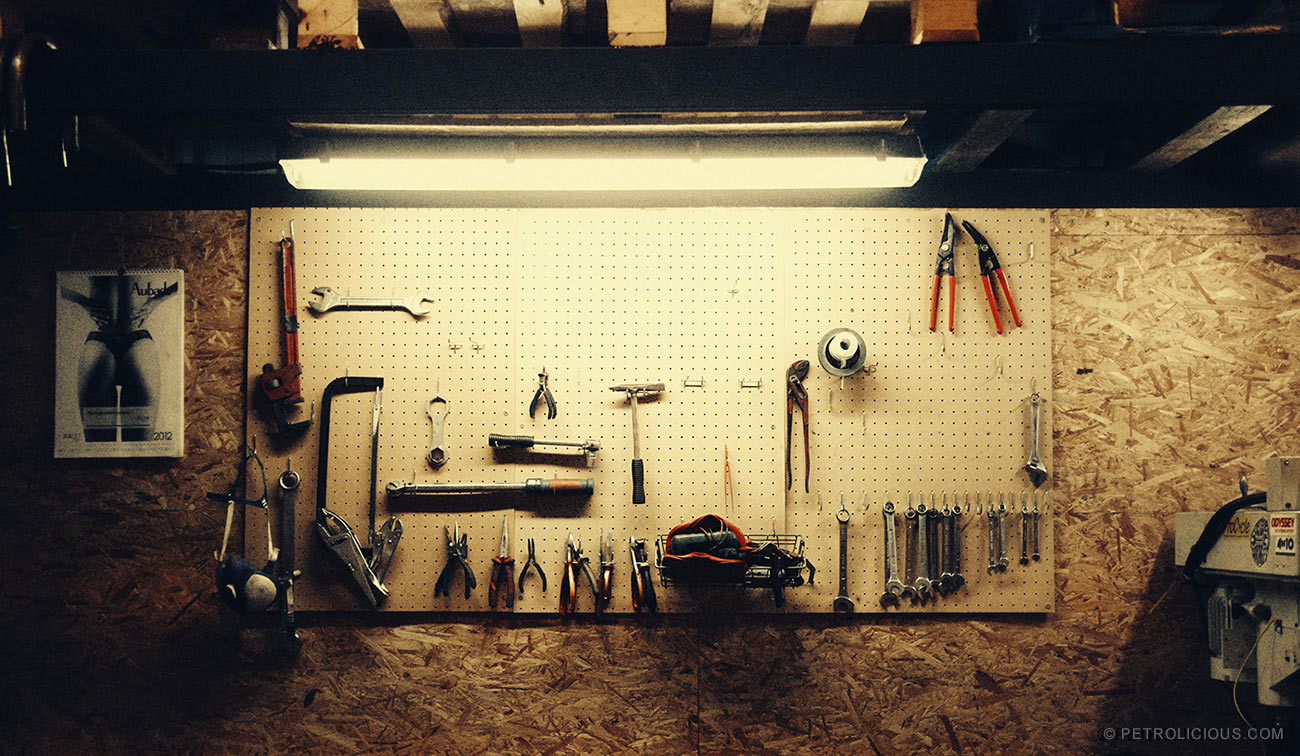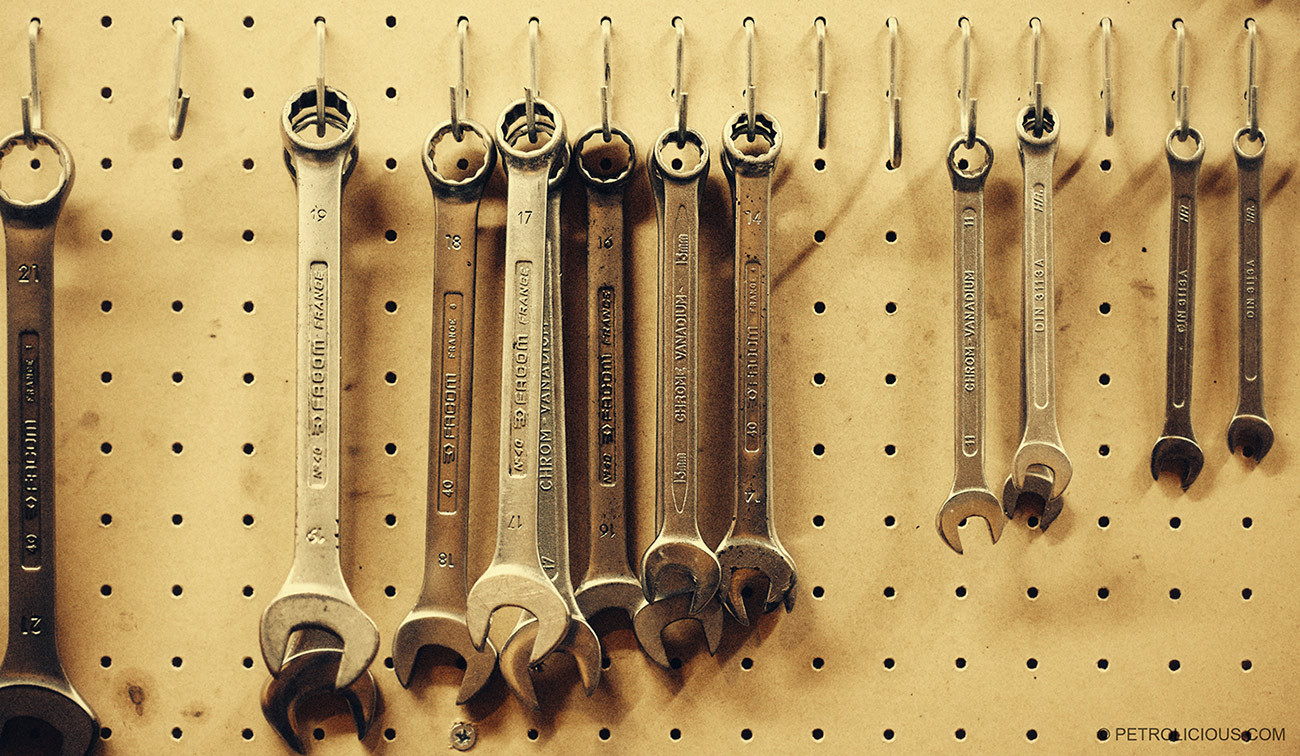“Beautiful car. Where are you from?” the gas station attendant asked as I stepped out of my vintage Porsche. Oregon, where full-service stations still exist, meant I’d need to show him the fuel filler location. “LA,” I replied. “That’s a long way in an old car! Aren’t you worried about breaking down?” “Not really,” I answered, with a touch of optimism, hoping karma wouldn’t immediately prove me wrong.
The truth is, I had put considerable thought into potential mechanical issues for this trip. I had prepared a well-organized Travel Tool Box, along with a selection of spare parts. Having a long-term relationship with this car, and like many vintage car enthusiasts, doing much of my own maintenance, I had a good sense of what might cause problems.
Of course, owning that pristine factory tool kit, meticulously assembled from swap meets and eBay finds, is a point of pride. It’s fantastic for showcasing at concours events and car meets. However, the real joy of owning a classic car lies in driving it, not just displaying it.
 Classic car tool kit assembly in a vintage garage setting
Classic car tool kit assembly in a vintage garage setting
While your classic might not be your daily commuter, it’s perfect for weekend club gatherings a few hours away or spirited drives on winding roads. Or perhaps, like me, you believe a road trip along California’s Highway 1 to Oregon, about 1000 miles of coastal beauty, is the ideal way to spend a week with your car. Long journeys in a vintage car offer a profoundly engaging experience, far removed from the insulated, media-saturated environment of modern cars speeding along interstates.
So, leave that factory-fresh toolkit in your garage. Let’s consider assembling a travel tool box that’s practical for roadside repairs without adding excessive weight or consuming valuable trunk space.
First, consider your trip’s nature. Is it a short weekend getaway, a few hours from home, or an extended cross-country adventure covering thousands of miles? The length and remoteness of your journey will influence the contents of your travel tool box.
 Selection of essential screwdrivers and sockets for classic car maintenance
Selection of essential screwdrivers and sockets for classic car maintenance
Screwdrivers: Yes, it seems obvious, but a couple of sturdy flathead and Phillips head screwdrivers are indispensable. They’re perfect for tightening loose hose clamps on fuel lines or adjusting minor fittings. I also recommend a small precision screwdriver set with interchangeable bits for delicate tasks, like fixing eyeglasses or adjusting interior components.
1/4-inch Drive Sockets: While seemingly small, a ¼” drive socket set is surprisingly versatile for many common classic car issues. They handle battery terminals, small fasteners, and various adjustments effectively. Their compact size is ideal for a travel tool box. Include several extension lengths, a flexible extension for hard-to-reach areas (like lower hose clamps), and a screwdriver-style handle for added leverage. Consider adding ¼” drive bits in Torx and other drive types for broader compatibility.
3/8-inch Drive Sockets: Pack a ratchet and specific sockets in 3/8” drive for tasks requiring more torque. Prioritize a spark plug socket and a deep socket matching your lug nut size. A 3/8” to ¼” adapter enhances versatility, along with an extension or two. Crucially, check spark plug accessibility beforehand. If a universal joint is needed for the most difficult plug, include it in your travel tool box.
Allen Wrenches: A folding set of Allen wrenches covers most common needs on classic cars, particularly for adjusting carburetors or interior trim.
Ignition Wire Pliers: These specialized pliers are designed to grip the spark plug boot, not the wire itself, preventing damage when removing spark plug wires. Protect those potentially fragile vintage wires!
Breaker Bar: A 24-inch breaker bar, paired with your lug nut socket, significantly eases tire changes. Its added leverage is invaluable on stubborn lug nuts tightened to modern car specs, and let’s be honest, it could double as a deterrent in an emergency.
Tire Gauge: Another essential, regularly checking tire pressure is crucial for safety and fuel efficiency, especially on older tires. Consider adding tire sealant like Fix-a-Flat or Slime for minor punctures, and a small 12V air compressor for convenient inflation adjustments on the road.
Water Pump Pliers: I highly recommend 10-inch Knipex Cobra pliers. Their adjustable grip is fantastic for hose clamps, reaching into tight spaces, and even handy for unclogging hotel shower heads – a true multi-purpose tool for your travel tool box!
Needle Nose Pliers: Electrician-style needle nose pliers with a crimping function add extra utility. If you already carry a Leatherman or similar multi-tool, you’re likely covered for this.
 Organized travel tool kit with wrenches, pliers, and sockets
Organized travel tool kit with wrenches, pliers, and sockets
Pliers and Vice Grips: Include both standard pliers and Vice-Grips in your travel tool box. Vice-Grips are invaluable for clamping hoses, temporarily securing parts, or acting as a makeshift wrench in a pinch.
Wrenches: Select a few combination open-end/box-end wrenches in sizes specific to your car. For European classics, odd metric sizes and 10mm are common. Japanese cars often use 12mm. A full set isn’t necessary for a travel tool box, but include sizes known to be used for critical components on your vehicle. Organize wrenches neatly by threading them onto a ¼-20 bolt with washers and a wing nut – compact and rattle-free.
Wiring Supplies: Always carry diagonal cutters, a crimper/stripper, crimp connectors, and electrical tape. A simple test light with a probe and alligator clip is invaluable for diagnosing electrical issues – chasing down power problems becomes much easier with this inexpensive tool in your travel tool box.
Utility Knife: A folding utility knife is incredibly versatile. From trimming fuel lines to opening stubborn packaging, its uses are endless. In an emergency, you can even fashion a funnel from a plastic bottle for topping off fluids, eliminating the need to carry a separate funnel.
Jumper Cables: Even with a new battery, pack jumper cables. They’re essential for jump-starting your car or assisting others, potentially making a new friend along the way!
Gloves: Include mechanic’s gloves and heavier leather work gloves. A few pairs of nitrile gloves are also useful for cleaner tasks.
Tool Bag: Choose a compact, durable bag to organize your travel tool box. Think beyond typical tool bags – surplus stores or even repurposed vintage luggage can provide unique and stylish options. The goal is functionality and portability, not just aesthetics (unless you find a Louis Vuitton at a yard sale!).
This list provides a solid foundation for your classic car travel tool box. Remember to personalize it based on your car’s specific needs and potential weak points. In a future article, we’ll delve into essential spare parts to complement your toolkit, ensuring you’re even more prepared for your next classic car adventure.

